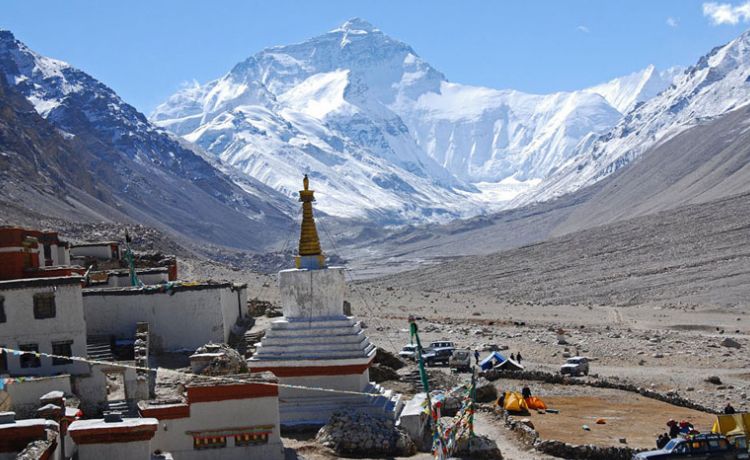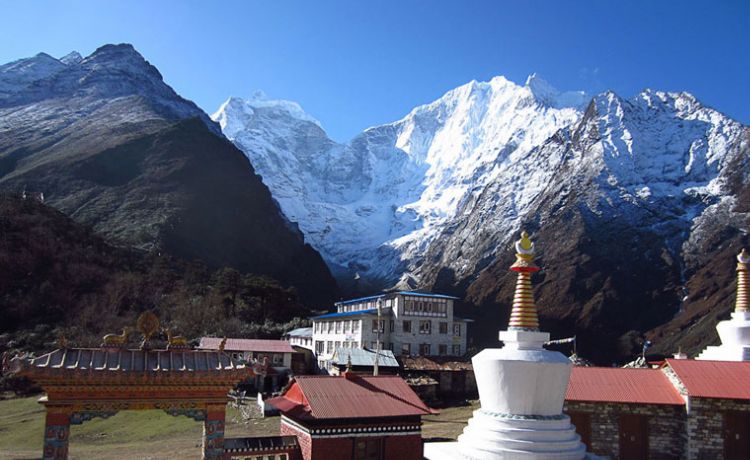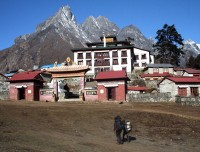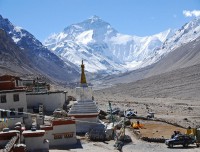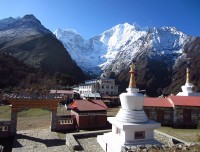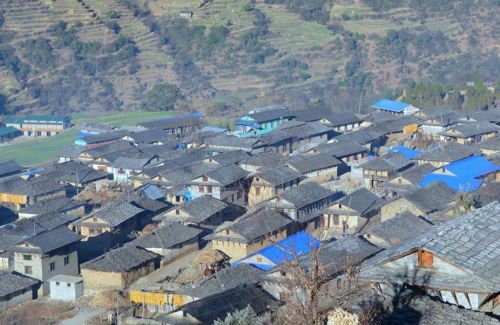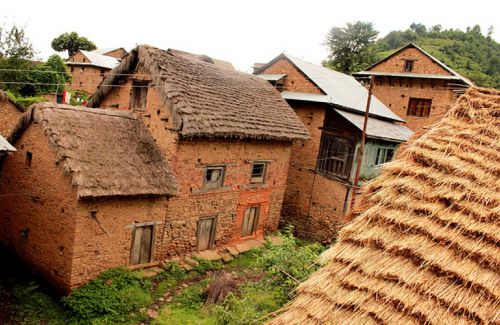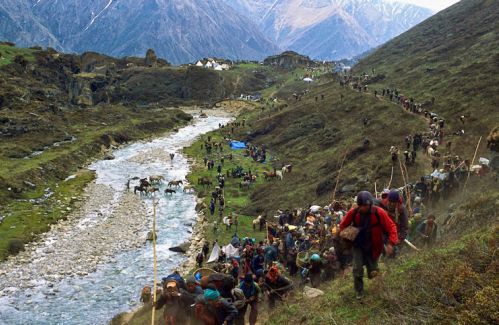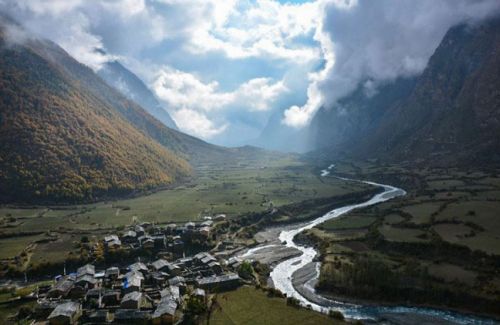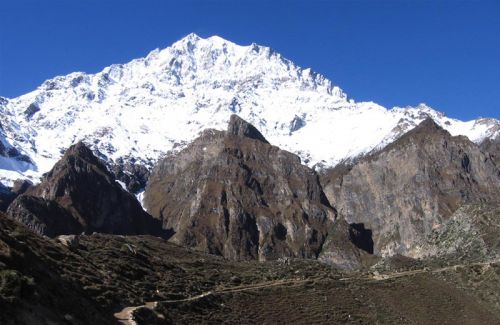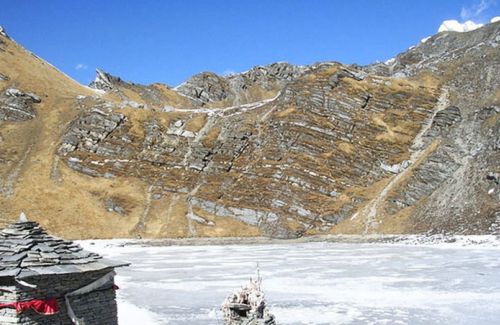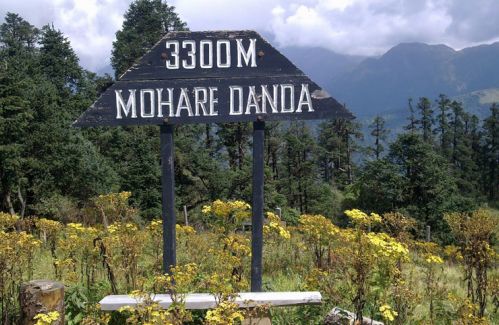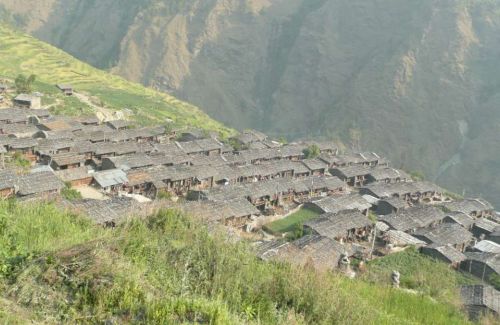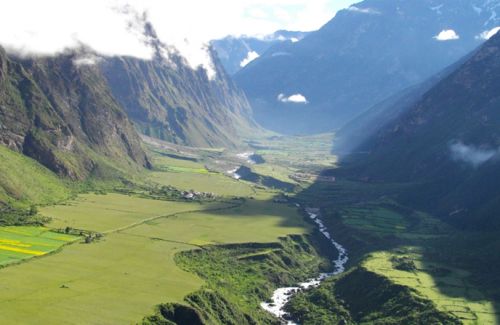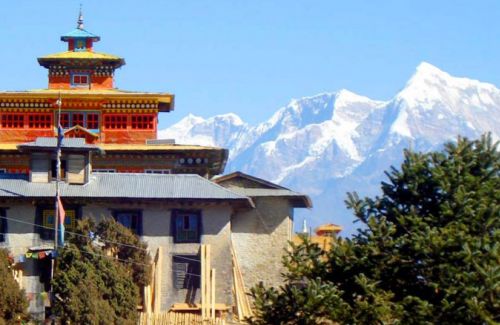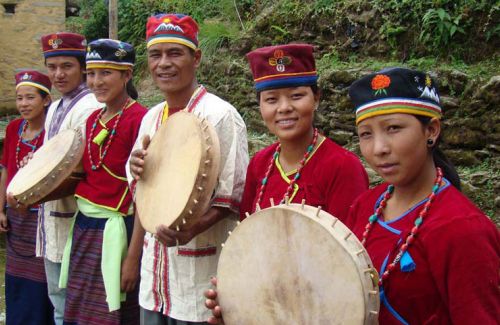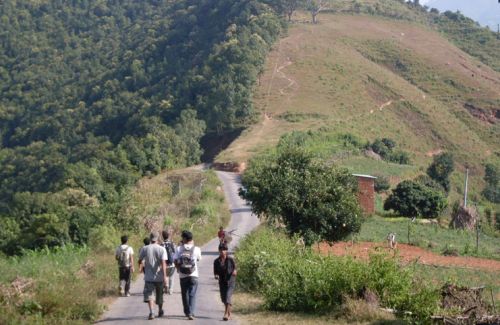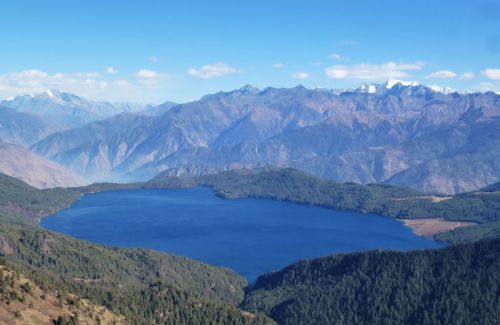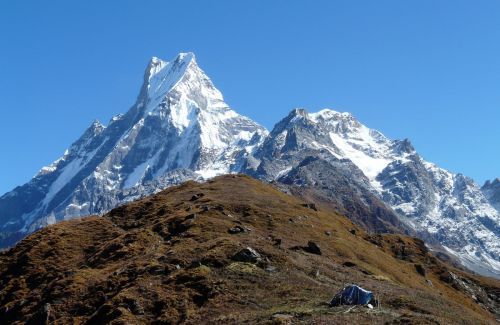Monastery Circuit Trekking
- Duration20 Days
- Max. Altitude3,220 m
- Starts FromUSD 1670
Destination:Nepal
Trip Grade:Moderate (**)
Meals:Breakfast + Lunch + Dinner
Transportation:Private Vehicle / Aeroplane
Accommodation:Lodge
Trekking Region:Lower Everest Region
Show All
Nepal is not rich only for its natural beauty but also for diverse religious and cultural attractions. Khumbu Region is the home to Mt. Everest and other beautiful peaks. Khumbu region trek is one of the 50 popular mountain tourism destinations in the world. Khumbu has been decorated by the beautiful glacial lakes, rich bio- diversity, unique culture,lifestyle, language and the attire of different ethnic groups.
As Budhhism is the dominant religion in the region, Khumbu area is home to many ancient monasteries too. Realizing the great religious and historical significance , a new tourism product, linking ancient monasteries in Solukhumbu, Khotang and Okhaldhunga has been developed.The Monastery Circuit Trekking trail links Kurima,Jhylsa, Junbenshiand Thupten Choling monasteries of the Lower Solukhumbu Region with Maratika Monastery of Khotang, Kikidhung and other monasteries in Okhaldhunga district. The special feature of Monastery Circuit Trek is that one can begin this trek from any districts he/she would like. Trek Monastery Circuit begins either from Phaplu airport of Solukhumbu, Rumjatar airport of Okhaldhunga or Lamidanda airport of Khotang district. But it is recommended to commence your trip from Lamidanda.
There are flights from Kathmandu to Lamidanda three times a week by Nepal airlines. A walk of 5-6 hours or a drive of about 4 hours on a dirt road takes trekkers to the Haleshi Mahadev Temple. This temple is known as the Pashupati Temple in the east. This is the holiest shrine,situated at the top of the small hill inside a beautiful cave. There are three caves in the temple premises,are believed to represent three eyes of lord Shiva. Buddhists, who worship the caves as Maratika monastery, believe that Padhmasambhava ( the founder of Tibetan Buddhism) and his wife Mandarava freed themselves from the circle of life and thus became immortal in these caves.
The second day of the trek begins from the Haleshi Mahadev Temple area and passes through the beautiful villages of Arkhaule and Lamidanda before stopping at Kharpa for the night. Kharpa is the small village with a few hotels and good camping sites. We go to Rawa Khola on the third day at Armara and progresses along the river before crossing it at Bhaise. The trek then reaches Dumre Dharapani. On the fourth day, we reach to Aishelukharka – the old district headquarters of Khotang. After having lunch at Aishelukharka, the trek passes through Deurali to reach Harishe for the nights stop. Harishe and Jhankribas areas have three monasteries.
The next day , we go to Kurima via Deurali after making a short detour to a monastery at Diyale. After passing night in Kurima, the trek progresses through the GHT sub Trail via Mude to reach Chitre for the night’s stop. Chitre is a small village with a helipad. on the seventh day, we reach to Dhodre,Dimbul.Over the next six days, the trek passes through Nirkum, Sibuje, Bung, Khiraule and Cherem before meeting the popular Jiri – Everest trekking route at Kharikhola. On the 14th day , the trek reaches Taksindu after crossing Dudhkoshi river. The trail offers magnificent views of Kusum Kangaru (6,367m), Mt. Numbur (6,959m),Khatang (6,853m.) and Karyalung (6,681m.). Takshindu gets its name from the beautiful Takshindu Monastery. This Sherpa village has also a cheese factory.
On the 15th day , the trek reaches to Thupten Chholing Monastery through the beautiful Ringmo Village after crossing the Thakshindu Pass (3,010m.). The trail then passes through Junbenshi village to the Thupten Chholing Monastery. The Monastery trek trail descends to Junbenshi Village on the 16th day, heads towards Phaplu airstrip after visiting Junbenshi Monastery and fly back to Kathmandu but if we still would like to continue the trek, we can go to Ngwar for the overnight stay passing through Pikey Peak, one of the revered mountain by the Sherpa, got its name from the Sherpa Clan deity. On the 18th day we reach to Kikurding Monastery in Okhaldhunga through Talking Danda that offers beautiful mountain views. The other day, we will be in Chaplu Bhanjyang and Phapre before reaching Tolu Gumba – a popular monastery in Okhaldhunga district. On the 20th day, the trek reaches to Patale through beautiful villages of Jhapre and Sigane. The next day, we reach to Rumjatar, the ending point of the trek.
Trip Highlights
- Full day sightseeing in World Heritage Sites in Kathmandu
- Fly from Kathmandu to Lamidanda and fly back from Phaplu to Kathmandu
- Scenic flight over the mighty Himalayas
- Monastery Circuit Trekking can be begun from either Solukhumbu or Rumjatar or Lamidanda
- Visit famous Haleshi Mahadev Temple - The Pashupati of the east
- Popular Takshindu Monastery
- The Sherpa Villages and Cheese Factory
- Cultural attractions of Lower Solukhumbu region
- Many old Monasteries of three districts: Solukhumbu, Khotang and Okhaldhunga
- Magnificent mountain views of Kusum Kanguru, Mt Number, Karyalung etc
- Scenic beauty, natural landscape of lower belt of Everest Region
Day to Day Itinerary
Day 01:Arrival in Kathmandu (1,350 m), Transfer to Hotel. Overnight at Hotel
Day 02:Pre-Trip Meeting and full day sightseeing in Kathmandu valley. O/N at Hotel
Day 03:Fly from Kathmandu to Lamidanda(1219 m) , 35 mins, trek to Halesi (1355 m), 5-6 hrs. O/N at Lodge
Day 04:Trek from Halesi to Kharpa (1221 m), 4-5 hrs. O/N at Lodge
Day 05: Trek from Kharpa to Dumre (1300 m), 5-6 hrs. O/N at Monastery
Day 06:Trek from Dumre to Harishe (2300 m), 5-6 hrs. O/N at Lodge
Day 07: Trek from Harishe to Kurima (2400 m), 5-6 hrs. O/N at Lodge
Day 08: Trek from Kurima to Chitre (2379 m), 6 hrs. O/N at Lodge
Day 09: Trek from Chitre to Dimbul (2600 m), 5-6 hrs. O/N at Home Stay
Day 10:Trek from Dimbul to Nirkum (2913 m), 5-6 hrs. O/N at Lodge
Day 11:Trek from Nirkum to Shyare (3220 m), 5 hrs. O/N at Lodge
Day 12:Trek from Shyare to Bung (1677 m), 6 hrs. O/N at Lodge
Day 13:Trek from Bung to Khiraule (2693 m), 5-6 hrs. O/N at Lodge
Day 14:Trek from Khiraule to Cherem (3040 m), 5 hrs. O/N at Lodge
Day 15: Trek from Cherem to Kharikhola (2040 m), 5-6 hrs. O/N at Lodge
Day 16: Trek from Kharikhola to Takshindu (2960 m), 5 hrs. O/N at Lodge
Day 17:Trek from Takshindu - Ringmo and to Thupten Choling(2920 m), 6 hrs. O/N at Lodge
Day 18:Trek from Thupten Choling to Junbeshi (2700 m), then trek to Phaplu (2413 m), O/N at Lodge
Day 19:Fly from Phaplu to Kathmandu (1350 m), 35 mins. O/N at Hotel
Day 20:Transfer to International Airport
Cost Include
- Airport picks up & drops off by private tourist vehicle
- Three nights’ twin sharing basis accommodation at 3 star category hotels in Kathmandu with Breakfast
- Guided city tour in Kathmandu by private tourist vehicle
- A government licensed holder city tour guide
- Full board meals (Breakfast + Lunch + Dinner) during the trek
- Lodges, Guesthouses accommodation during the trek
- Professional license holder English speaking Trekking Guide
- The required number of local staff and porters (2 Trekkers = 1 Porter)
- Food, accommodation, salary, insurance, equipment and medicine for all staff
- Monastery Circuit Trekking Entry permit and TIMS permit for trekking
- Down Jacket, Duffle bag and sleeping bag by Himkala Adventure if required
- Airfare from Kathmandu to Lamidanda and Phaplu to Kathmandu
- Farewell Dinner in traditional Nepali restaurant with cultural show
-
Government Taxes, VAT,and Service Charge
Cost Exclude
- Lunch and dinner in Kathmandu
- Entrance fee in all monuments during tour
- Emergency Rescue and Evacuation cost
- Your travel insurance
- Nepal entry visa fee
- Personal expenses like hot shower, battery recharge, hot and cold drinks etc
- Personal trekking equipment
- Tips for trekking, tour staff and driver (Tipping is expected)
-
Any others expenses which are not mentioned on ‘Cost Includes' section
Detail Itinerary
Day 01Arrival in Kathmandu (1,350 m), Transfer to Hotel. Overnight at HotelAfter you land in the Tribhuvan International Airport, you go forward for the custom formalities and come out of the gate, where the representative from Himkala Adventure will be waiting to greet you and transfer you to the hotel. Overnight at Kathmandu
Day 02Pre-Trip Meeting and full day sightseeing in Kathmandu valley. O/N at Hotel After breakfast, we head towards the city tour. The city tour to UNESCO World Heritage Sites will be an exciting and knowledgeable with history, art and architecture especially from the medieval period. We visit the Stupas, temples courtyards, palaces, water spout and the local areas full of ritual activities. After sightseeing, we return back to hotel and do briefing about the Monastery Circuit Trekking that starts from tomorrow. Overnight at Kathmandu
Day 03Fly from Kathmandu to Lamidanda(1219 m) , 35 mins, trek to Halesi (1355 m), 5-6 hrs. O/N at Lodge It is 142 km east from Kathmandu to Lamidanda. Kathmandu to Lamidanda flights are of 35 minutes. These are scheduled flights operated only by Tara Air and Nepal Air. We fly from Kathmandu to Lamidanda, and then start our trek to Haleshi. It is about 5-6 hours trek to reach to Haleshi Mahadev Temple. This is one of the famous Shiva temples in the east. There are many things to explore like cave, hill and Maratika Monastery. Overnight at Guest House
Day 04Trek from Halesi to Kharpa (1221 m), 4-5 hrs. O/N at Lodge The trek starts from Haleshi Mahadev temple area and passes through beautiful villages of Arkhaule and Lamidanda. The scenic beauty around it is very much astonishing. KKharpa is a small village with few hotels and camping sites. Overnight at Guest House
Day 05 Trek from Kharpa to Dumre (1300 m), 5-6 hrs. O/N at Monastery The trek from Kharpa after breakfast goes ahead to Rawa Khola at Armara and progresses along the river before crossing it at Bhaise. The trek then reaches Dumre Dharapani where accommodation is available on homw stay to a beautiful monastery. Overnight at home stay at monastery
Day 06Trek from Dumre to Harishe (2300 m), 5-6 hrs. O/N at Lodge We meet the old Haleshi – Phaplu trekking route at Aishelukharka. Aishelukharka is the old district headquarters of Khotang and the major trading center in the district. The hilly market place has hotels and lodges and other administrative departments. After having lunch at Aishelukharka, the trek passes through Deurali to reach Harishe for the nights stop. Overnight at Guest House
Day 07 Trek from Harishe to Kurima (2400 m), 5-6 hrs. O/N at Lodge After breakfast, we follow the trail to Bagor. We can visit the monastery at Diyale. The trail meets the GHT Sub Trail at Parma Ri that has a helipad. Overnight in Guest House
Day 08 Trek from Kurima to Chitre (2379 m), 6 hrs. O/N at Lodge After spending night at Kurima, the trek progresses through the GHT Sub Trail via Mude to reach Chitre for the night’s stop. Chitre is a small village with a helipad, few lodges and two monasteries. It is the popular stopover the trekkers on the GHT Sub Trail in Lower Solu. Overnight stay at Lodge
Day 09 Trek from Chitre to Dimbul (2600 m), 5-6 hrs. O/N at Home Stay The trek passes through the village of Dhodre to reach Dimbul. There is a monastery at Dhodre. Our trek from Chitre to Dimbul gives the scenic beauty of lower Solukhumbu and their cultural background. Overnight at home stay
Day 10Trek from Dimbul to Nirkum (2913 m), 5-6 hrs. O/N at Lodge We begin our trek from Dimbul to Nirkum after our breakfast. After we reach at Nirkum, we visit a monastery. This really gives us great knowledge to distinguish the people living in different topography and the way they have been following the traditional norms and value. Overnight at Lodge
Day 11Trek from Nirkum to Shyare (3220 m), 5 hrs. O/N at Lodge Our trek from Nirkum to Shyare too targets for the best possible site around the village along with monastery there so that we can be able to understand the people and their cultural activities. Overnight at Lodge
Day 12Trek from Shyare to Bung (1677 m), 6 hrs. O/N at Lodge We as usual, begin our trek after getting our breakfast from Shyare to Bung. The trail offers an amazing view of Lower Solukhumbu including the human influence that creates a vibrant atmosphere. There is a beautiful monastery too. Overnight at lodge
Day 13Trek from Bung to Khiraule (2693 m), 5-6 hrs. O/N at Lodge The trek from Bung to Khiraule starts after having breakfast. We find the little village very rich in vegetation especially the trees like rhododendron, daphne and meconopsis. Khiraule is at an elevation of 2,200 m and surrounded by huge Himalayan Mountains and the deep gorge river running by the side of the village. There is a beautiful monastery at Khiraule. Overnight at lodge
Day 14Trek from Khiraule to Cherem (3040 m), 5 hrs. O/N at Lodge We trek to Cherem passing through Phoktekharka and Cherem Khola. We pass through Mani walls in the village which reflects human efforts in the course of civilization since long. Cherem is at an elevation of 2,904 m from the sea level. We can see the great Himalayan village life and Buddhist followers and their activities. Overnight at Cherem
Day 15 Trek from Cherem to Kharikhola (2040 m), 5-6 hrs. O/N at Lodge The trail that comes passing through Nirkum, Sibuje, Bung, Khiraule and Cherem meets the popular Jiri- Everest trekking route at Kharikhola. The monastery at Kharikhola is worth visiting. Kharikhola is abuzz with foreigners during the peak season. Overnight at Lodge
Day 16 Trek from Kharikhola to Takshindu (2960 m), 5 hrs. O/N at Lodge We reach to Takshindhu after crossing the Dudh Koshi River on a suspension bridge. The trail is largely downhill and passes through Juving village. The trail offers magnificent views of Kusum Kangaru (6,367 m), Mt. Number (6,959 m), Khatang (6,853 m) and Karyalung (6,681 m). Takshindu gets its name from the beautiful Takshindu Monastery. This Sherpa village has a cheese factory. Overnight at Lodge
Day 17Trek from Takshindu - Ringmo and to Thupten Choling(2920 m), 6 hrs. O/N at Lodge After breakfast, we start our trek from Takshindu and reach to Thupten Chholing Monastery through the beautiful Ringmo Village after crossing the Takshindu Pass (3,010 m). Ringmo is a beautiful Sherpa settlement with grass fields all around. The trail then passes through Junbenshi village to the Thupten Chholing Monastery. Overnight at Lodge
Day 18Trek from Thupten Choling to Junbeshi (2700 m), then trek to Phaplu (2413 m), O/N at Lodge The trail descends to Junbenshi village and heads toward Phaplu airstrip after visiting the Junbenshi Monastery. Overnight at Lodge
Day 19Fly from Phaplu to Kathmandu (1350 m), 35 mins. O/N at Hotel We fly from Phaplu to Kathmandu in the morning. You could utilize rest of the time for shopping or taking rest. Overnight stay at hotel in Kathmandu
Day 20Transfer to International Airport We transfer you to the Airport 3 hours before the flight so that you could manage for the boarding. We show our gratitude for joining Himkala Adventure for the Monastery Circuit Trek and depart from the airport. We wish you have your safe journey to your next destination. Namaste!!!
Trip FAQ
Himkala Adventure would like to answer all the queries about Monastery Circuit Trekking for all curious travelers/trekkers in the world. As you are entirely from different geographical location, you could better to know everything about the treks from the beginning i.e. airport pick up till your departure like airport picks up, drops off, accommodation in city, in the trek, guide and porters, safety for the trekking, food and accommodation and some other things that you might face on the way. Hope our endeavor listing these questions answers will help you self informed.
This is simply the outlines of the services we offer but it may differ as per your requirement, number of trekkers. What we go through our conversation, we will manage the means of transportation, hotels in the city, accommodation in the trekking, numbers of porters etc. This is general idea about Monastery Circuit Trekking before your trip and you become clearer about the trek. Please feel free to contact us to get more information about the trekking in the Himalayas of Nepal.
1) What physical fitness do I need to book this trip?
Every trekking in the Himalayas of Nepal requires the certain level of physical and mental fitness. So, we advise you to be in good physical shape and able to feel comfortable while hiking up and down 7 to 12 miles per day on a trail carrying a day pack of about 10 pounds. Three things could make you confident enough for any trek you would like to do: aerobic, strength and mental.
Aerobic conditioning is important primarily because you will be trekking in thinner air, up to 40% less than at sea level. With good aerobic conditioning, you will be able to better metabolize whatever oxygen is available to you. You should plan on doing at least one hour of aerobic 3 /4 times per week for 1 month or more before your arrival in Nepal. Walking, jogging, cycling, hiking on valley floor to ridge line ascents with day back are some of the excellent forms of exercise, so long as you are strengthening leg muscles and building stamina. Speed is not the essence; stamina, confidence and continuity are. Do as much uphill as possible. If you live in flat area, go to the stadium and use the steps with your pack.
2) Do I really need to use guide to Monastery Circuit Trekking?
You are advised to use Guide so that you could feel safer in the unknown area because the guide can tell you the possible danger as they have guided in this region since long. Most importantly, the Himalayan weather is really unpredictable and the Guide can help you to take proper shelter. Nest advantage to be with Guide is you get more knowledge about local culture and you could have easy access to interact with the local people. In 2014, the Nepal Government clearly has stated that the trekkers should have a guide but still it is not seemed in the practicality.
3) How do I find Himkala Adventure for my pick up at the airport?
Our representative from Himkala Adventure will display a small board (placard) of company or your name outside the airport terminal. You will be driven to the hotel by our tourist vehicle.
4) What sort of accommodation do I get in Kathmandu?
Normally we provide standard rooms with twin sharing accommodations at three star or similar category hotels in Kathmandu including breakfast. Accommodation in these cities can be upgraded as per your request. But some of our packages are sold without accommodation in the city.
5) How are tea house facilities during Monastery Circuit Trekking?
Tea House is the combination of guest house, restaurant, and social hang out. Tea houses in Monastery Circuit Trekking area are professional though they are simple but with neat and clean lodging offering fine views and plain but fresh and hygienic food with friendly atmosphere Most of the Tea Houses have running water facility. Many of them have hot water available for bathing. But we discourage our groups from using water heated by wood as lack of firewood in most villages is a big environmental concern in Nepal.
6) What sort of accommodation do I get in trekking?
Guesthouses/Tea Houses/Lodges provide twin sharing single and double rooms and occasionally a dormitory which is basically clean with a mattress and a quilt or blanket. Our company provides the sleeping bag if needed but we always recommend having your own sleeping equipments. You have to share the room with your group member or sometimes with unknown traveler. The toilet is always outside the room with basic facilities.
7) What sort of foods, water and drinks can I expect in trekking?
The foods in the Himalayas are very simple. There are mostly the family members themselves to cook and serve the meal. They are simply trained but experienced because they have been offering such services for many years in this busy route. The food is hygienic, fresh and delicious. We recommend you to drink mineral water or the boiled or using water purification pills or drops.
Most of the foods are cooked in the kitchen of tea houses. They serve you with different varieties of delicious Nepali and continental dishes. The most popular Nepali food is daal bhat (rice and lentils) with some mixed vegetable curry. Garlic soup is popular as it helps you with acclimatization. You could better be vegetarian in the mountains. All hotels in cities and guesthouses in trekking serve the vegetarian food. You can find all common types of drinks like hot chocolates, coffee, tea, hot lemon with honey, ginger tea, soft drinks etc. you will have your breakfast and dinner at the lodges where you will be staying and lunch somewhere on the way to your next destination.
8) What mode of transportation do I use?
We will provide the private transportation for Airport/Hotel/Airport pick up and drop and sightseeing in Kathmandu Valley. We use transportation as based on our cost inclusion section. The transportation varies depending on your requirements at the time of booking the trip.
9) What is the best season for this trekking?
The best season for Monastery Circuit Trekking is spring (March to May) and autumn (September to December). These are the perfect time of the year for the breathtaking views of Himalayas with clear and sunny days. But the weather in the mountains is unpredictable.
10) What is the weather and temperature like during the trekking?
The climate in Nepal varies from place to place which can be categorized in different four main seasons. The main seasons in Nepal are spring (March to May), summer (June to August), autumn (September to November) & winter (December to February). The best season to travel in Nepal is autumn (September, October & November) & spring (March, April & May). Weather in the mountains is unpredictable. But the day temperature in Monastery Circuit Trekking is comfortable.
11) Who will be guiding me during this trip?
We provide the professional government license holder English speaking trekking guides for our entire trekking trip. We can also provide French, Spanish, Japanese, German or Italian speaking guides as per your preference with extra payment but not guaranteed. All guides will be Nepali people who are carefully selected on the basis of their appropriate experience, leadership skills and personality. They are all trained from Nepal Academy of Tourism and Hotel Management, certified and approved by the Tourism Department of Nepal government. We provide a different city tour guide to guide you in UNESCO World Heritage Sites in Kathmandu. They are the professional license holder guide specialized in culture, history, geography, iconography, archeology and religion with good command over English. Tour guides are specialized in city tour and trekking guides are more in the hiking and trekking in the Himalayas.
12) What sort of experience do your guides have?
Our entire city tour guides have bachelors to Master Degree academic education along with many months tour guiding training from Nepal Academy of Tourism and Hotel Management, Rabi Bhawan, Kathmandu, Nepal. They are fluent in spoken languages and informative about the sites in many aspects. They are quite experienced and dedicated to their job and responsibilities.
Our entire trekking guides have minimum Intermediate to Master Degree academic education with trekking guide training from Nepal Academy of Tourism and Hotel Management, Rabi Bhawan, Kathmandu, Nepal. Many of them are from villages. As they are local, they know more about the routes, necessary precaution to be taken and so on. They have spent many years exploring many parts of the country. They are trained in first aid and able to handle any situation easily. They speak good English and make you know about the places you visit.
13) May I charge my electronic gadgets during Monastery Circuit Trekking?
Most of the places in your tea houses have charging facilities. You can charge your devices by paying some extra money. It’s good if you bring TWO or THREE pin travel adapter and put your gadgets at warm place at night.
14) How much additional money is required for this trip?
It’s a very personal question as expenses depend on habit. Normally, in Kathmandu you can allocate about USD 10 to 15 per person per lunch or dinner. USD 10 to USD 15 per person per day will be sufficient to buy bottles of water, chocolates, pay for a hot shower during the trekking. Other personal expenses will be your own calculation.
15) What is the social and environmental responsibility of Himkala Adventure for this trip?
The situation of environment in Nepal is in considerable stage due to so many factors caused by global warming, human activities, and adverse effects of natural incidents. Nepal is in between two giant countries like China and Nepal. The ozone layer is depleting and the atmosphere is getting heated. So, its direct effect is to the Himalayas that the snow is melting day by day and the sea level is rising. It is due to population growth, people are clearing the forest and the soil is being eroded. As a part of society, and our trekking related activities are directly concerned with the social and environmental things. We are very conscious not litter in the open spaces, to manage garbage properly and make local people aware in this campaign. We are working together with other companies and taking these issues seriously.
16) What is the minimum number requirement for this trip?
We operate individual trip to the group joining trips for Monastery Circuit Trekking. If you want to do any private trip we are ready to organize for solo traveler as well with some additional charges.
17) Are there communication or internet services during Monastery Circuit Trekking?
All our guides carry the local mobile phone. You can use his mobile phone to make any local or international call from trekking trails by paying him directly. You can even pass him number to be connected with your family or friends. We highly recommend taking local SIM card for call and internet services during trekking. Local SIM cards are easily available in many stores and at airport as well. You need to provide two copies of your photographs and your passport copy to get local SIM CARDS of NCELL & NTC (only these two companies provide telephone services in Nepal.
18) May I get chances for shower during Monastery Circuit Trekking?
Most of the guesthouse provides hot shower with some extra cost. In few places, bucket water will be provided for the shower.
19) May I add extra days in trekking?
Yes. You can customize the trek as you would want. We are flexible while preparing the itinerary and you could lengthen or shorten it as per your requirement.
20) What happens in case of emergency?
Himkala Adventure has prepared for any emergency situation and knows how to handle it. Our guides are trained in first aid and can deal with most of the basic ailments that occur during the trek. Every client should have his own insurance before coming to Nepal for the case of emergency.
21) Do I need to have insurance for this trip?
We request you to have a travel-insurance policy to cover theft, loss, medical problem & emergency helicopter evacuation from high altitude places before coming Nepal. Choose a policy to cover your emergency high altitude helicopter evacuation with all medical insurances for trekking in high altitude in the Himalayas of Nepal. Your travel insurance is always needed before going in any high altitude trekking. Please check your travel insurance policy which doesn’t exclude mountaineering or alpinism. Although you will not be engaging in these activities in your trekking, you might have problem convincing the insurance company of this fact. Rescue insurance need to cover an emergency helicopter evacuation or a charted flight from remote mountain trails of Nepal as well as international medical evacuation. A helicopter evacuation might cost US$ 2500 to US$10000 depending on the places. So that travel insurance to cover all above is must to travel in the high Himalayas of Nepal.
22) What type of shoes should I wear during Monastery Circuit Trekking?
You could better have carefully chosen hiking boots with extra laces which should be kind of strong, well-made but light boots for Monastery Circuit Trekking. Shoes and boots are best to buy before arriving in Nepal. We advise you to wear your new shoes for sometime before trek so that you could feel well habituated on the newer trail for your feet.
23) Can I use credit cards in Monastery Circuit Trekking?
No, you can use only in the cities like Kathmandu. So, it is better you to make change in Kathmandu. When you are out of city, all you need is cash, better to have small notes. Please change the currency in local Nepali rupees before you go to the mountains.
24) Do I need to tip my guide and porter? How much would that be?
Tipping is not mandatory, neither it is right to ask by anyone but it is a way of showing gratitude after taking service. The level of tip also shows how satisfy you are from the team that you had been during your tour/trek.However, we recommend you to spend minimum 10% of your total trip cost for tipping entire local staffs, the ratio of tipping guide and porter will be given to you at the pre-trip meeting in Kathmandu before starting the trek.
25) How is Camping Trek to Monastery Circuit being operated?
Camping trek is fully organized and supported, with a team of guides, cooks, and porters to accompany you. Our porters carry all the trekking gear, food, fuel and personal belongings. Our cooks prepare hot meals. Trekkers need only carry a small bag as required for the day. At night, tents for dining, sleeping and ablutions tents are provided and set up, also mattresses and down-filled sleeping bags, tables and seating.In a typical camping trek, we start the day around 6 a.m. with a cup of hot tea. You are then provided with a bowl of warm water for washing. Then trekkers enjoy breakfast before leaving camp. The trek begins around 7.30 - 8 a.m.
Trekkers can set their pace for pausing and sightseeing and the walk to the lunch spot will normally take 3 hours. On arrival, you are served hot lunch. In the afternoon, after walking for another 3 to 4 hours, you arrive at the next camp around 5 p.m. Tea & snacks are served while our staff readies the camp. Dinner time is around 6/7 p.m. in the dining tent, lit with lanterns and comfortably furnished. The food is healthy, wholesome and hygienically prepared.
Trip Note
Cost:
The cost of trip varies according to the number of travelers in the group, the category of the Hotel, mode of the transportation and any kind of changes (if there is). So, if you would let us know all of these above mentioned things, then we could quote you the exact price.
Essential Documents:
You are requested to send the following documents after you confirm or book the trip with Himkala Adventure:
A copy of your passport and travel/health insurance documents with contact details, three passport size photos.
It is advised to maintain a separate photocopy of all important documents including traveler’s cheques, bank/ATM card, contact numbers, international flight tickets, and emergency contact numbers.
Extreme Weather and Airport Closures:
Weather conditions in the Himalayas are unpredictable. Flights can be cancelled or delayed due to bad weather. Flights to and from Phaplu are particularly prone to travel delays. There is no other alternative except having patience for the good weather or have some optional trip around or chartering helicopters. You will be accommodated at your joining hotel at your own expense.
Weather:
The main trekking season in Nepal is from October to December and March to May. The day temperature for walking to Monastery Circuit Trekking is comfortable. The sky is clear although there is snow and rainfall occasionally. It is about 10 degree centigrade at the height of 3,600 m and increasingly lower, the higher we go. There may be snow at Annapurna Base Camp at any time of the year.
Nepal Strikes:
There is much more progress in the political scenario in Nepal and we assure you that travelling in Nepal is safe. But there may be Bandha (wide transport strikes) at a very short notice. The shuttle bus is in operation by Nepal Tourism Board and the Nepal Tourist Police in conjunction with the Himalayan Rescue Association from domestic and international terminal to the various hotels in Kathmandu. The service costs 300 rupees per person.
Itinerary Disclaimer:
Himkala has thoughtfully designed all the itineraries but our itineraries are updated for the betterment on the basis of our past travelers’ comments and our own research. In case you find changes in the itinerary you printed and the upgraded one does not affect your trip. Please note that some changes may occur in our itineraries due to bad weather and common seasonal changes to timetables and transport routes.
Physical Rating:
Your trip will be meaningful if you could find yourself fit and fine. You will be walking up to 3,220 m from the sea level. As the geographical region varies, there is a temperature variation as well. So, we advise you to undertake regular physical exercise, jogging, hiking, riding, ascending and descending the long stairs etc.Precautions and acclimatization are undertaken but be aware of the effects altitudes can have.
Group Size:
Himkala Adventure organizes solo to group travelers. Our group trips are designed for sharing accommodation and there is no single supplement. Single travelers share with the same gender from twin to multi-share in an accommodation. You are requested to have mutual understanding in between the fellow travelers who have joined from the different parts of the world. Please remember that you have great responsibilities in the group. If you are requested to be at a particular place at a certain time, make sure that you have been there at a time. It is much more pleasing sharing experiences and traveling together.
Accommodation and Meals:
Accommodation and Foods in the Himalayan region of Nepal cannot be compared with any developed countries in the world. We know that you might not have experienced such things before but you should take it easy. Accommodations at local lodges are simple but clean and comfortable. The food is plain. Toilets and washing facilities are shared and rudimentary. In high altitude regions, there are very few tea houses and one has to be happy to share in simple dormitories without electricity, without running water. Hot shower means a bucket of hot water upon our request.
Money Matters:
Please note that most establishments in Asia will not accept foreign currency notes that are old, torn or faded and they can be very difficult to exchange or extra fees added when exchanging at banks. Please ensure that you have new, clean notes.
The official currency of Nepal is the Nepali Rupee (NPR). ATMs can be found only in major cities of Nepal like Kathmandu, Pokhara, Chitwan, Bhaktapur etc. The government of Nepal has banned the import, export and use of 500 and 1000 Indian rupee notes in Nepal. You make sure that you won’t carry these notes upon arrival in Nepal, otherwise they are confiscated and you may be fined.
Please make sure that the foreign currency notes that you have are new and clean notes because old, torn or faded foreign currency notes in Nepal are very difficult to exchange or extra fees added when exchanging at banks.
While travelers cheques have security advantages exchanging them can be a lengthy process, commissions can be high (up to 10%) and they can be difficult to change in rural areas, on weekends and public holidays. If you choose to bring travelers’ cheques, make sure they are a major brand and major currency.
Tipping:
Tipping is not mandatory. It is not anyone’s right asking for tips but if you are happy with the service, you could tip the staffs. It is entirely a personal preference. Tipping could be significant to them who took take great care of you in your traveling period. Himkala recommends that you could tip any intended recipient by any member of the group than collected and passed on by the group leader.
Note: Please do not tip with coins or dirty and ripped notes. This is culturally taken as an insult.
Local Dress in Nepal:
Nudity is a sensitive issue in Nepal. Women should avoid wearing shorts and sleeveless tops in public places where this might be seen as inappropriate. Remove shoes before entering certain holy places. Non-Hindus are not permitted in some temples.
Feedback:
Your feedback will be the great guidance to meet our target and to bring improvement in our service. What and how have you experienced with Himkala Adventure and our staff? Please write, we will read it carefully. One cannot see his/her shortcomings that are lying with them. Someone should point it out. We are always eager to hear from you.
Trip Info
- Health and Fitness
- Himkala Crews
- Safety and Security
- Travel Insurance and Evacuation
- Trip FAQs
- Washing and Shower
- Water/Food and Nutrition
- Weather
- Trip Grading
- Accommodation/Shelter
- Altitude Sickness
- Communications and Updates
- Conservation
- Cross Cultural Issues
- Essential Do’s and Don’ts
- Foot Ware/Foot Care
- Equipment List
